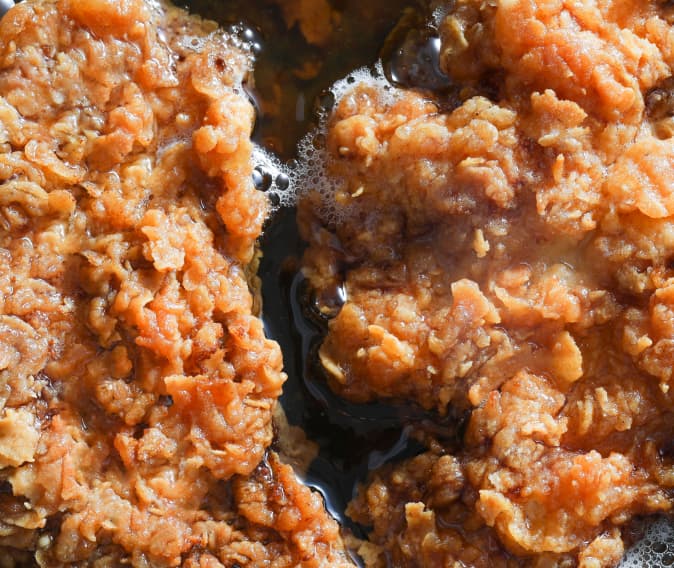Written by
UPSIDE Foods
“Life begins after coffee,” the saying goes, and it’s easy to understand why. America, after all, is a caffeinated nation: 66 percent of us start every morning with a cup of joe. Its history, however, is complicated—and, like many major culinary innovations, it drew a certain amount of suspicion on its way to becoming a daily ritual for tens of millions of Americans.
Now, the world is at another culinary tipping point. The FDA and USDA approved UPSIDE’s cultivated chicken for commercial sale in the US. Our chicken is now served at Michelin-Star restaurant Bar Crenn in San Francisco, led by chef Dominique Crenn. Cultivated meat was born from a need to change the way meat gets to the table—and it had to overcome countless obstacles and detractors to get where it is today. While cultivated meat still has a long way to go before becoming an American staple, we know we’re in good company: Read on for a reminder of how, when it comes to food innovation, delicious things come from challenging the status quo.
A Cup of Change: Coffee's Journey from Banned to Beloved
The coffee bean was first pressed into service in Ethiopia in AD 800, and soon enough, the first “coffee houses” became a place to chat politics and philosophy. These coffeehouses had such potential for exchanging ideas that they sent shivers down the spines of the politically powerful. During the French Revolution, the “intelligentsia” plotted their rebellions in coffeehouses. Khair Beg, the governor of Mecca, was so concerned about coffeehouses that he tried to shut them down in 1511. Coffee was banned, and those who dared drink it faced physical punishment.
Despite challenges, it was inevitable that a delicious beverage like coffee would become popular. Fast forward a few centuries and coffee is a trusty sidekick on rough mornings for hundreds of millions of people around the globe. But coffee isn’t just here to wake us up; it offers some surprising health benefits. Studies have shown a protective quality when it comes to conditions like Alzheimer’s, and let’s not forget its unique ability to make Mondays feel….less like Mondays.
Sushi’s Swim Into American Hearts
Sushi initially encountered some hesitancy in the United States – the idea of consuming raw fish was so outside the comfort zone that early resistance was significant. However, the culinary landscape began to shift as sushi chefs created versions with more accessible ingredients, like the California Roll, using familiar ingredients such as cucumber, avocado, and crab meat. This innovation transformed sushi from an unusual specialty to a beloved part of American dining culture.
Today, the American food scene is replete with sushi’s influence. Sushi is featured in over 50,000 restaurants, and the United States boasts a substantial sushi industry with thousands of establishments and billions in sales. The market size is soaring, predicted to hit $22.1 billion, reflecting sushi as a social dining staple. And just like that, sushi has flipped from culinary curiosity to mealtime staple, proving that even foods that once felt unfamiliar can find their way onto mainstream menus.
Breaking the Ice: The Unfreezing of Attitudes Towards Manufactured Ice
In the days before refrigeration, ice was a seasonal harvest, cut from the frozen lakes and ponds of winter and stored for use throughout the year. When John Gorrie introduced manufactured ice (made in a freezer) in the 1800s, it was met with skepticism for being “unnatural”. This skepticism turned into opposition when Frederic Tudor, who had built a fortune on selling harvested ice, launched a smear campaign against manufactured ice, claiming it was infected with bacteria.
As the demand for ice grew, so did the realization that lake-harvested ice was not without its flaws. Industrialization brought pollution, which contaminated lake-harvested ice, rendering it unsafe. Additionally, unpredictable weather patterns led to inconsistent ice harvests, causing “ice famines” and pushing consumers towards the more reliable “artificial” ice. Despite the initial mistrust, manufactured ice proved to be more convenient, safer, and cost-effective. Today we can’t imagine getting our ice from anywhere but the freezer!
UPSIDE Foods Turns the Meat Industry Upside Down
Over the past decade, it’s become clear that traditional ways of producing meat are unsustainable for people, animals, and the planet. But when the idea of cultivated meat—meat produced directly from the cells of an animal, not from slaughter—first made its way to consumers, it was passed off as “science fiction.” Now, just eight years later, the FDA has given it a green light, the USDA’s oversight validates that cultivated meat IS meat, and top chefs across the country are some of UPSIDE chicken’s biggest fans.
The next challenge for cultivated meat is to increase the scale of production to get it onto tables across America. And there are plenty of folks out there who say this can’t be done because, yes, doing something new is very hard. But if looking back at the evolution of some of our favorite foods shows anything, it’s that what seems impossible today can be the norm tomorrow. We’re dedicated to not just making sure change happens – but to leading the way.



